Editor’s note: Welcome to our monthly series, Driving the Greats. Your chaperone, David Lillywhite, Editor of acclaimed Magneto magazine, will be putting you in the driver’s seat of some of the most memorable cars of all time. Buckle up and enjoy. James Mills
The Jaguar Classic technician bends down to shout in my ear, his Midlands accent still easily distinguishable above the heady idling of the four-cam V12 right behind me.

“It’s worth £11 million you know!”. And then he beckoned me out of the covered paddock and into the busy crowd of onlookers, each one seemingly looking in different ways and not always aware that the one-of-a-kind, fiery and temperamental car intended to tackle the Le Mans 24 hour race that is the 1966 Jaguar XJ13, was heading their way in the hands of someone who’d only even sat in it for the first time 20 minutes previously.
It would be foolish to claim that I know the XJ13 intimately. But then, hardly anyone does, save for test drivers David Hobbs, Richard Attwood and Norman Dewis – and sadly Norman is no longer with us to relay how he almost destroyed the XJ13 back in the 1970s when man and machine careered off the MIRA test track, near Coventry, and ended up deep into a cornfield.
Since then, it’s only occasionally been driven, but I’d been trusted to pilot it up the hill at the 2011 Goodwood Festival of Speed. Or maybe ‘trusted’ is the wrong word, given the looks of trepidation on the faces of the Jaguar Classic support crew. To be fair, I’m not sure I trusted myself either.
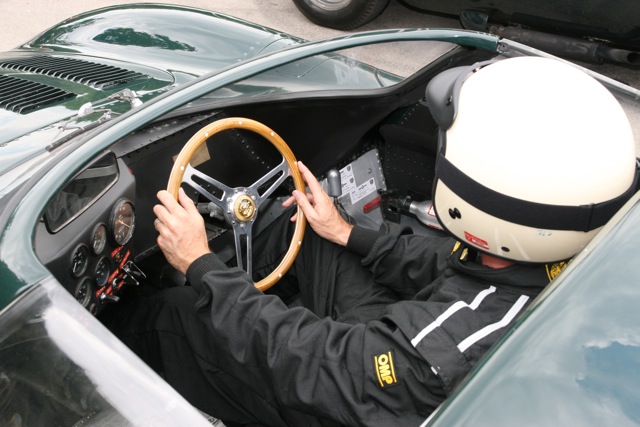
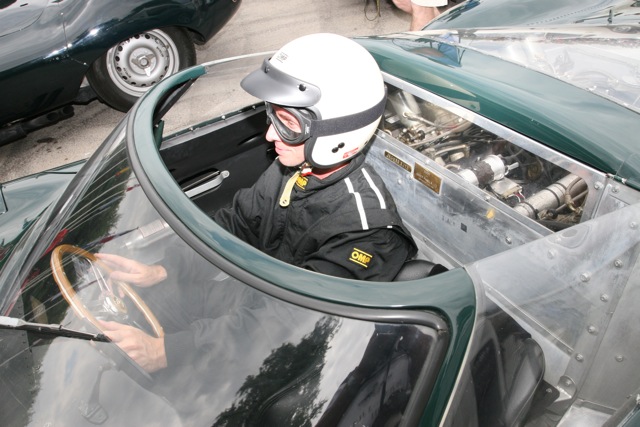
The story of the XJ13 is unlucky indeed. Devised to relive the Le Mans glory of the C-type and D-type days of the 1950s and early ‘60s, the XJ13 was a brave attempt to keep up with the Porsches and Ford GTs of the mid-1960s.
It was built on an all-alloy monocoque, riveted together aircraft-style. A specially-developed double overhead camshaft V12 engine – roughly two six-cylinder XK engines formed into a vee – was mounted directly behind the cockpit as a stressed member of the chassis. With Lucas mechanical fuel injection the new V12 developed 502bhp, powering the rear wheels via a five-speed ZF gearbox.
Racer and former Jaguar apprentice Hobbs was brought in as development driver, to be joined by Attwood during final testing at Silverstone, but by that time it was clear that more work was needed. All the same, Hobbs had achieved a new UK circuit lap record at MIRA of 161.6mph. The XJ13 could have been a contender but Jaguar management wasn’t convinced and the project was starved of cash – and then the arrival of Ford’s 7-litre GT40 killed it dead anyway.
The single XJ13 built languished at the factory for a few years, and was then dusted off for the launch of the new V12-powered E-type Series 3 in early 1971. After all, what better to show off the company’s experience with V12 engines?
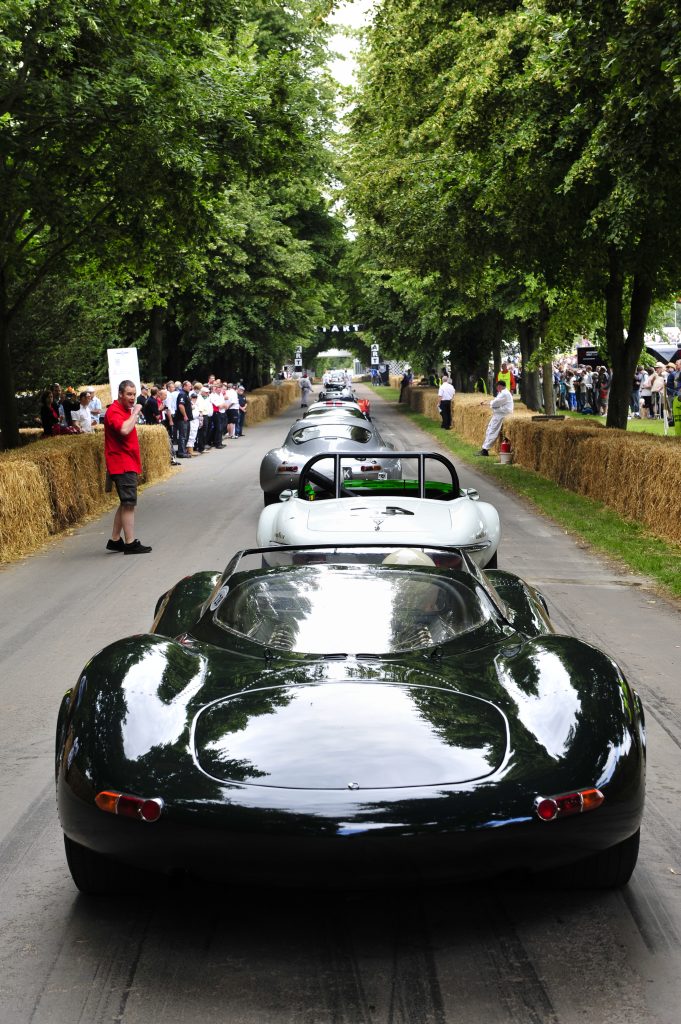
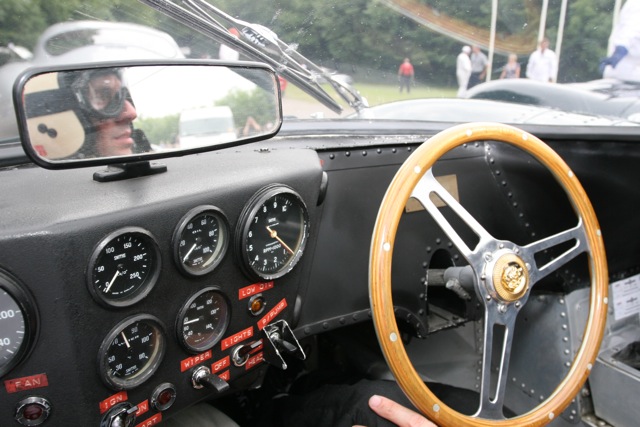
Norman Dewis was asked to drive the car at speed for a short film sequence. It’s no longer clear what happened, though there are theories that a rear wheel collapsed or an already-damaged tyre blew. Whatever it was, Norman and the XJ13 were launched off the MIRA test track at high speed, into the infield and flipped end over end and then rolled twice before stopping shiny side up.
Somehow Norman, who had ducked under the dashboard, emerged relatively unscathed but the car was a wreck. It was put away and left alone until it was spotted by Edward Loades of Abbey Panels, the company that produced much of the panelwork for Jaguar. Loades persuaded the company to allow Abbey Panels to rebuild the XJ13, though it was done to a slightly different style from the original (Building the Legend’s XJ13 recent recreation is a more accurate representation of the original XJ13).
Since then, the XJ13 has been wheeled out on special occasions. On one outing it was over-revved, resulting in a piston having to be weld-repaired, which meant that from then on full power couldn’t be risked. Then the sump was damaged on a kerb in Copenhagen, and that was it until a full rebuild in 2006, most notably for Goodwood – which is why I lowered myself into the cabin with some trepidation. Like a D-type, the XJ13 has a relatively roomy cabin, but in the XJ13 the driver sits much further forward, with all that engine directly behind.
The cockpit hasn’t been restored, thankfully, so the bare aluminium is satisfyingly tarnished and workmanlike. The flimsy door clicks shut, ignition and fuel are flicked on via toggle switches on the dash. Pushing the ignition switch further down operates the starter – and after a brief whirr a noisy V12 starts up directly behind.
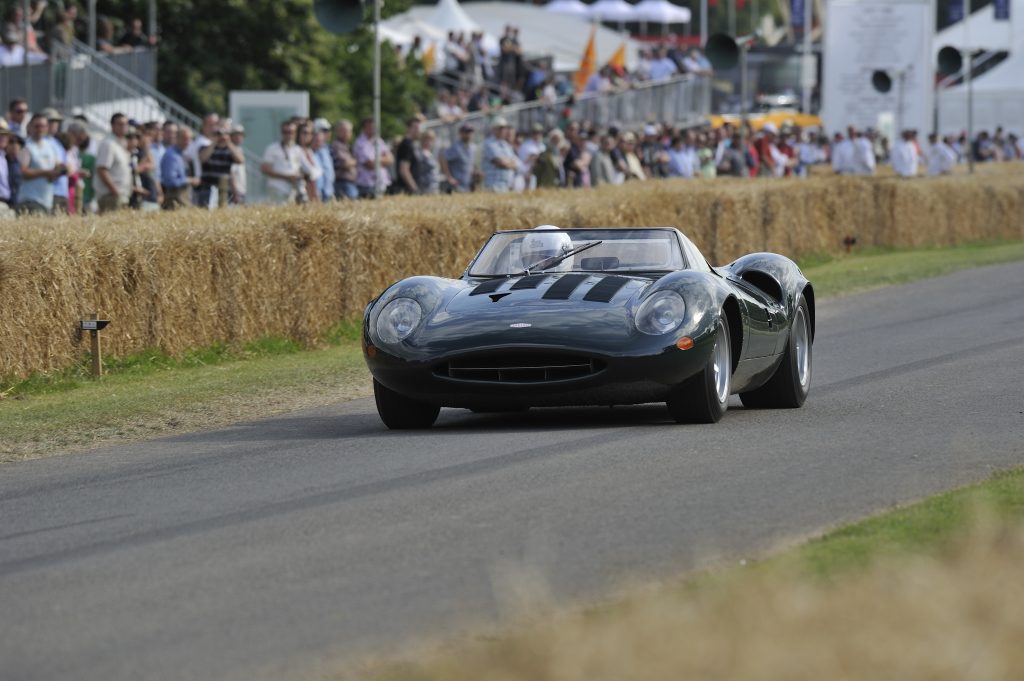
There were seven of these double overhead camshaft V12s built at the time but only two were full XJ13 spec, with straight-cut gears driving the camshafts. The whine of the gears and clatter of the valve train adds to the soundtrack but it’s the exhausts that dominate, angry and aggressive on every blip of the accelerator pedal.
The biggest foible for the XJ13 is the gearshift, on the driver’s side sill. The action is short, heavy and occasionally obstinate, feeding into a many-jointed linkage that winds all the way past driver and engine to the gearbox. At a standstill the only way to find the dogleg first is to ease it firmly into third, then gently into second, back and across (‘but not all the way’, my notes say, underlined) and then down into first. Rush that last bit and the gearbox will simply refuse to slot into first – and then the only way is to repeat the procedure all over again, though with decreasing chances of success.
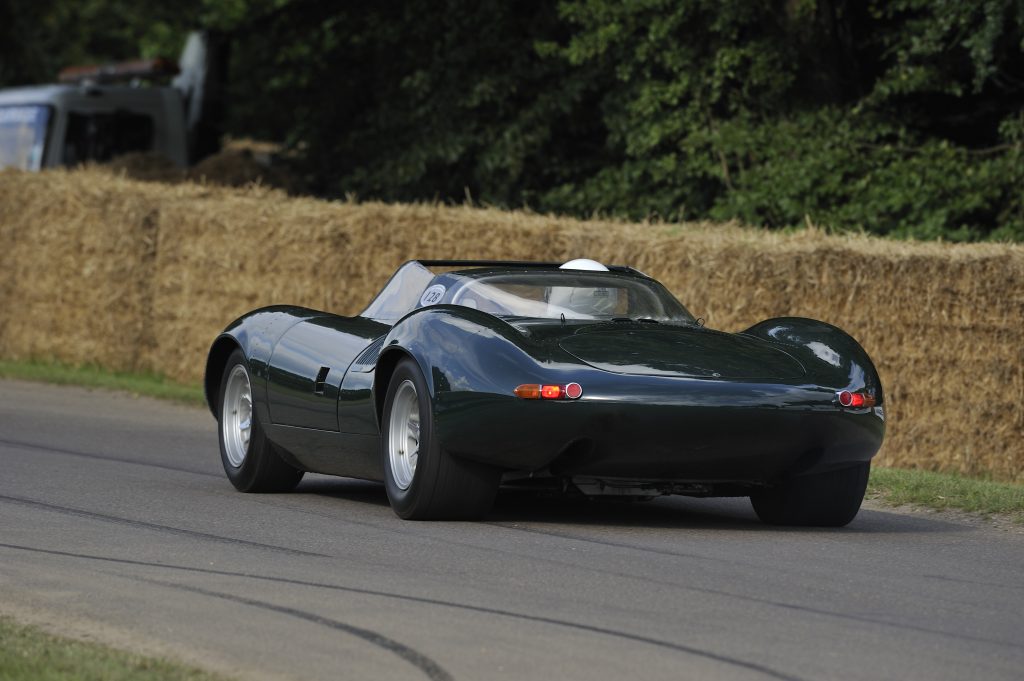
Now that’s all very well but the Festival of Speed is famous for the long queues to the startline. I found the best method was to leave the XJ13 in first the whole time once it was close enough to the start to risk an embarrassing delay should first prove impossible, and stop and start the engine as many times as I dared – in the knowledge that the more often I did so, the greater the chances of fouling the spark plugs.
It’s not great for the nerves, knowing that this high-profile, unique and invaluable piece of history might decide not to behave off the line when the marshalls give the signal to go, but just as I was a few cars away from the start, there was an almighty roar overhead and I looked up to see the Vulcan bomber coming in low over the Festival. By the time I’d stopped gawping, it was almost my time to head up the Goodwood hillclimb, watched by thousands (and all those TV cameras).
Thing is, like a D-type, the XJ13 is remarkably easy to drive, at least until it’s pushed hard. The race clutch is reasonably light, and there’s more than enough torque to get this 1125kg car off the line cleanly. On the move, the gearchanges are much easier, though heavy, and the steering – unassisted of course – feels light enough to be responsive but not so light to reduce feel.
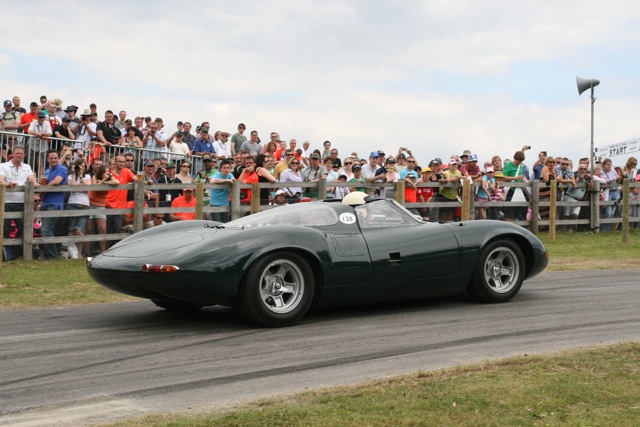
It’s the engine that’s the revelation though. What a thing! There’s so much torque, such instant response to the throttle, that acceleration is lightning fast and speed builds seemingly with little effort, though with plenty of noise from the intake stacks and exhaust. As you’d expect from a V12, it’s a smooth, searing sound, somehow both more violent-sounding yet more sophisticated than any V8’s soundtrack.
Accelerating past Goodwood House produced a deep bellow from the intake stacks; quickly backing off (too soon in fact) for the notorious Molecomb corner, the exhausts crackled. I remember being too gentle on the accelerator after Molecomb, still relieved to have made it round this innocent-looking car killer of a bend without incident. And then a burst of acceleration again, exhaust resonating off the dauntingly close flint wall, and a last blast to the finish, where I could kid myself that the run hadn’t looked disappointingly tame for the spectators – because for me it was a career highlight.
It would be dishonest to claim that I got to know the XJ13 or that I came close to even a fraction of its abilities. I remember the frustration of the gear selection at low speed, the relief that it improved on the move, the competence of the brakes, the light feel of the steering and the surprisingly forgiving ride, which was probably due to the height and relatively low pressures of the tyres. But most of all I remember that engine note.
Read more
The man who brewed up Jaguar’s lost V12
Future Classic: Jaguar X350 XJR
First drive: This Jaguar E-type is running on sustainable fuel – how soon before your classic is too?










So why didn’t they make it in a V8 and put in production so we could enjoy it to but loved the story, brilliant. bob…